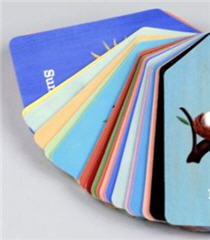How to Teach Thanksgiving Using Flashcards


Some of your adult ESL students may be familiar with the Thanksgiving holiday; some may simply be aware that there is a holiday by that name celebrated in the US, but have no idea what the actual celebration entails or how it originated. Young learners may see, every now and then, a typical Thanksgiving meal in an American children’s movie or TV program, but they won’t most likely get a whole lot of background info. Give your young students the opportunity to learn about this important American holiday; although they may not get the chance to sample a delicious turkey dinner with all of the fixings, we have got the recipe for a perfect Thanksgiving lesson!
Warm up with a Thanksgiving poem
Students who may know little about Thanksgiving may have the idea that it’s about getting together with the family to eat. The best way to start a Thanksgiving lesson is by conveying the real spirit of the holiday. Use this Thanksgiving Poetry Worksheet to accomplish this. First, students read the poem. Then, you ask them what it’s about. They should tell you it’s about being thankful for everything we have. Ask them to underline or read out loud the lines that reference this (I am thankful for shoes on my feet and food in my stomach...). Discuss with students the things they are thankful for; you may have them complete the worksheet too.
Gather your ingredients
Tell your students that American families gather for Thanksgiving to celebrate everything they are thankful for, and they put together a wonderful feast for this celebration. Tell your students they will gather some of the typical foods and ingredients used to prepare a Thanksgiving meal. Prepare a scavenger hunt with flashcards or pictures that include these foods and ingredients. Add some flashcards that have no relation to either Thanksgiving or meals (i.e. furniture, school supplies, technological devices, etc.) Hide the flashcards around the classroom (if possible outside in the school yard) and ask students to collect only those that are foods or relate to food preparation.
Students count how many they found, and you may ask each if they can name the ingredients or foods they found. Supply the right word whenever needed. Ask your students which they would use for their own Thanksgiving dinner.
Spice it up with some Thanksgiving vocabulary
Give your students a brief overview of how this celebration originated and the main points of the first Thanksgiving; teach them as many new words as you deem they’d be comfortable learning and make the historical account appropriate to their level. Use Thanksgiving clipart and Thanksgiving borders to illustrate the new words. Have them practice their new words by filling in the blanks in a brief written account of the first Thanksgiving.
Add a handful of action to shake things up
Play spelling catch to review how the new words are spelled. Hold a bean bag in your hands, call out a word, and toss the bean bag to a student. He or she says the first letter, then tosses the bag to a classmate who has to continue with the second, then tosses the bag to another, and so on. When someone makes a mistake or can’t recall the next letter, he or she has to sit down. The last student left standing wins!
Serve up some fun Thanksgiving worksheets
From crossword puzzles to word search activity sheets, great sites like Teachnology allow you to easily custom design your own. There’s also a great collection of Thanksgiving activities available at BusyTeacher.org that you can use with your class.
End your perfect Thanksgiving lesson with the perfect Thanksgiving song
What better way to end a great lesson than with a hilarious Thanksgiving song! Students listen to the song, fill in the blanks in the lyrics, and finally write a letter of apology to all of the turkeys who end up on the Thanksgiving table.
Because it's prepared with a dash of reading, a sprinkle of new words, a teaspoon of history, a pinch of music, a cupful of action, and heaps of wholesome fun!
Feel free to share your own Thanksgiving lesson recipes. We’d love to hear them!